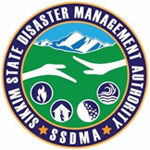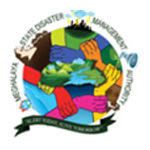Collaborators







- Project Status: Ongoing
- Project Area: Shillong and Gangtok, India
- Funder: Ministry of Environment, Forest and Climate Change, Government of India
Overview:
Himalayan cities are particularly vulnerable to disasters and extreme events such as earthquakes, landslides, flash floods, thunderstorms, cold waves etc. The magnitude of the impacts caused by disasters and extreme events may vary depending on the risk and exposure of the city. Physical risks and vulnerabilities posed by disasters in the Himalayan cities are often accompanied by lack of necessary resources – financial, human and institutional – as well as access to relevant scientific information to cope with them. Such constraints call for an urgent need to enhance the knowledge base and adaptive capacity of cities by the integration of disaster risk reduction into urban planning. Besides, the rapid urbanization and climate change could lead to unpredictable stresses on the environment, hence, there is need for systematic review to collect evidences relating to impact of disaster risk and vulnerability to natural disasters in these regions. IRADe with support from Ministry of Environment, Forests & Climate Change (MoEFCC) under National Mission on Himalayan Studies (NMHS) aims to develop disaster resilience action plans for Shillong and Gangtok.
Objective:
The aim of this project is to provide decision supporting tools for disaster risk reduction for North East (NE) Region cities which include development of cadastral maps for micro zonation of hazard risks and action plan for disaster resilience of the identified cities. The major objectives of this study are
- To develop cadastral maps at the scale of 1:4000 and map the hazard/disaster wise vulnerable zones of the Shillong and Gangtok urban agglomerations.
- To identify and map critical infrastructure at risk through ground-surveys, telecommunication, emergency operation centers, shelter, slums, hospitals, schools etc.
- To develop a disaster resilience action plan for the identified cities and prioritize actions for disaster risk reduction through multi-stakeholder consultations involving citizens, government, public and private sector.
- To spread awareness and capacity building of citizens, city, district and state authorities on disaster resilience of the North Eastern cities
Outputs:
-
- Land use/land cover maps of NE cities at cadastral scale 1:4000.
- Individual Hazard Vulnerability Maps
- Disaster wise vulnerable zone maps of identified cities.
- Vulnerability assessment of selected NE cities to natural disasters.
- Critical infrastructure risk mapping of identified cities.
- Disaster resilience plans for the two NE cities.
- Capacity building of city, district and state authorities on disaster resilience.
Outcomes:
The outcomes of the project will help in developing policies for reducing the risk of losses in the events of natural disasters in the two cities.
-
- Generate awareness amongst stakeholders such as policy makers, state government, local governing bodies, government departments, NGOs, communities/citizens about the disaster risk reduction to reduce vulnerability.
- Address lack of coordination and bring all stakeholders to the same platform, leveraging IRADe’s experience, expertise and strong local network.
- Craft and prioritize city-specific actions for disaster risk reduction. Leading to capacity building of local mountain communities for disaster risk reduction by imparting them the necessary knowledge and information through social networking and public participation in workshops.